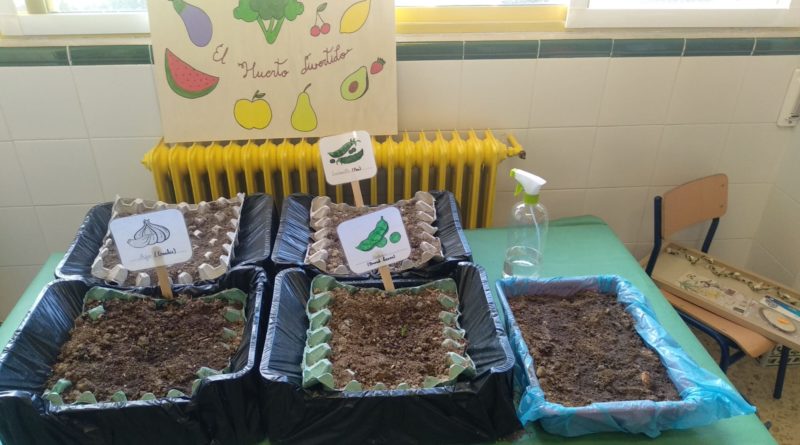CLASSROOM GARDENS AND FOREIGN LANGUAGE TEACHING
Teaching young children about the relevance of environmental care is not an option but an impending need in a highly polluted world that is screaming for help. broad notions connected to emotional intelligence (IQ), like reflective thinking, empathy or creativity (Bowket and Percival, 2011) are indispensable to make the most of young students’ environmental awareness.
In a project about the environment, “Little gardeners make big forests” is the sentence children find written in big coloured words near the garden zone. The main areas involved in this project may be English, science, music and art and craft; and the final product a classroom garden for children to understand a plant life cycle; being children able to describe the basic procedures in English.
The materials to be used should be easy to find and bring to school, like egg cartoons or empty toilet paper rolls. In a classroom corner, “The garden”, two big tables shall be arranged and “fenced” with recycled ice lolly sticks. It is advisable to use options that shed quick results, like using beans, garlic or similar seeds, ensuring that students can see the progress each step of the way. The expected result brings up a series of motivational benefits: they understand how a plant grows from a seed, they live the gardening experience and learn how to care for plants and it is a beautiful decoration for the class, just to mention a few. Moreover, in the creation of the garden, everyday a small group is in charge of controlling the plantation and reporting back progress and changes.
A nice contextualizing element can be a simple adaptation of the story “Jack and the Beanstalk”. Before watching the video, children meet pictures of the characters and very basic information and the teacher can act as storyteller; by doing so, we ensure that although the language in the video may be above their level, they can follow the story with the visual support.
So as to delve in a closer connection with English, children familiarise with the basic lexis required, for example using a free printable worksheet with pictures in which they match the key words with the images: seed, plant, stem, roots, petal, flower, leaf, and the like. There are plenty of possibilities for them to gain confidence with this vocabulary, like “find your partner flower”, where children in controlled groups of eight and given the flashcard of a plant, make simple questions: Have you got red petals? Have you got a big stem? Once they find their partner, they can both write the parts of the plant in their particular paper flower. As we can see, our class garden can be the excuse for a simple communicative activity.
A weighty factor that contributes to memorable learning is creating a print-rich environment; thus, another parallel activity has to do with labelling the elements in the class garden, so that children practise some writing: fence, soil, flower pot, compost, gardener, etc. Similarly, this first approach to the target lexis can be further exploited with simple games like “swat the word”, “running dictation”, “Chinese whispers”, “bingo cards” or “order the sentence”.
Using songs that carry along some action is always an invaluable fun component of the English classroom that contributes to “hidden” learning of structures, lexis and connected speech. A prime example may be using the simple music of traditional songs to change the lyrics; in this case, the following lyrics follow the marked rhythm of “I´m a little teapot…”
“I´m a little bean in a round pot,
I feel home, I´m not alone,
give me drops of water so I grow,
see my flowers, don´t let me go”.
In “find the clover”, children in small groups follow simple oral and written clues that lead each group to find their clover, receiving feedback from the teacher (i.e. cold, when being far from the objective; hot, if they get closer to their clover). The objective is that children progressively find the clues following the teacher´s oral instructions.
We cannot bring this paper to an end without stressing the prominent role of the teacher to create a positive classroom climate in which children feel cared about; and also, the value of experiential learning in guise of a “classroom garden”. The transversal elements in this mini-project shall, for sure, instil respect for nature. Indeed, taking care of their own garden is a versatile educational tool that can be used for a wide range of topics and subjects.
Bibliography
Bowket, s. and Percival, S. “Coaching Emotional Intelligence in the Classroom” (2011) Routledge. London and New York.
Video by: SciShow Kids
Source: https://youtu.be/0vu4wdHNo4Q




